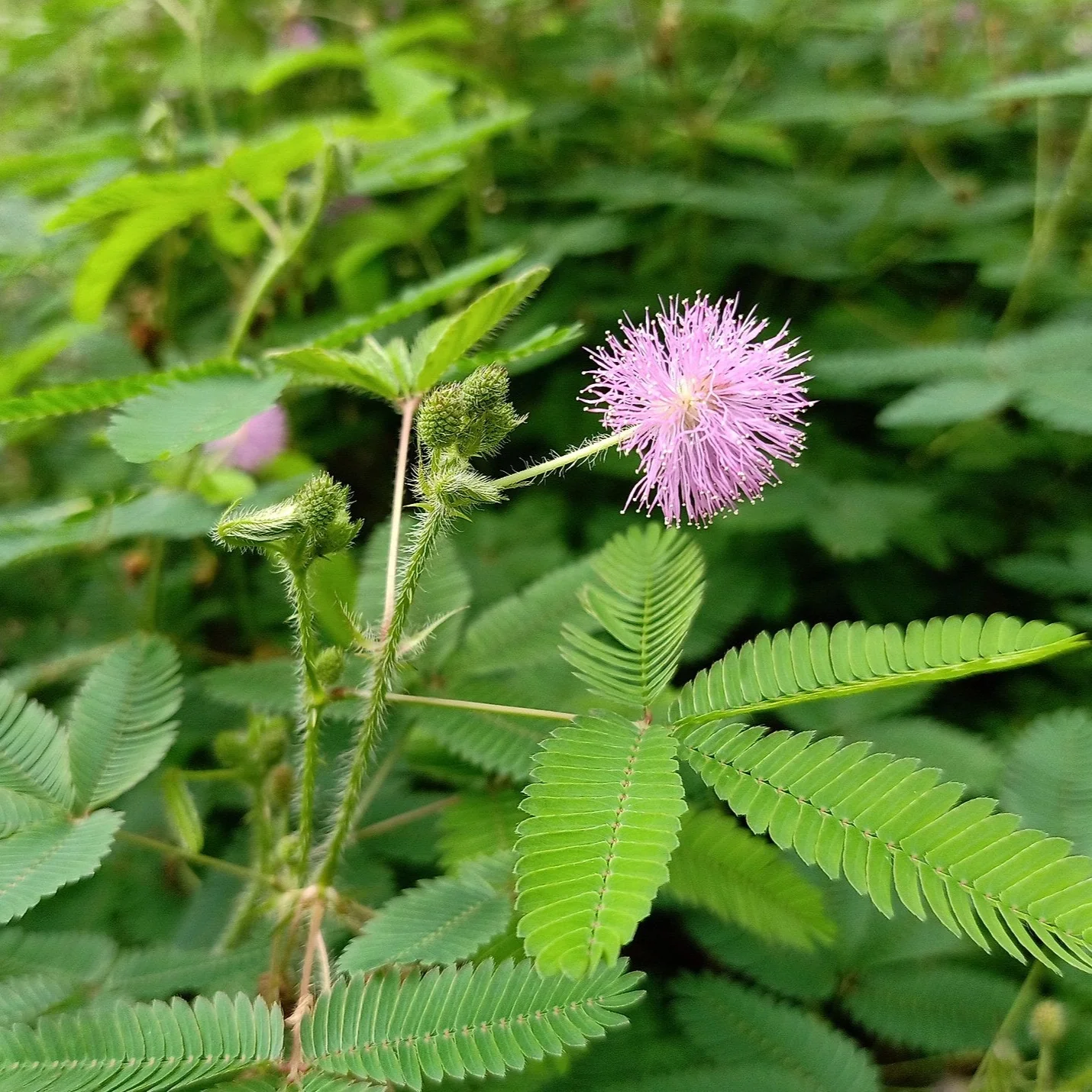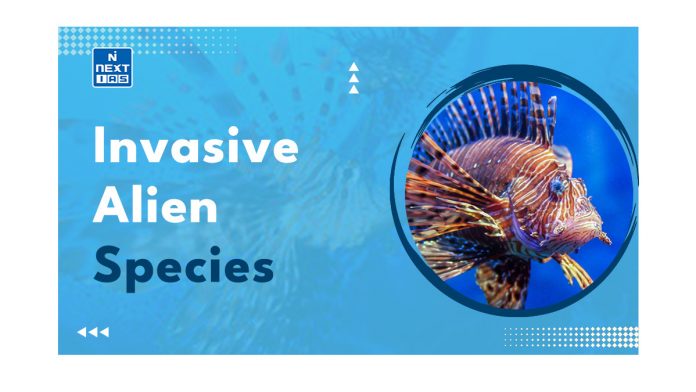Invasive alien species (IAS) represent a significant threat to biodiversity, ecosystems, and human well-being worldwide. The rise in globalization, increased trade, and human mobility have exacerbated the spread of invasive alien species, making it a critical issue that requires urgent attention and comprehensive management strategies. This article of NEXT IAS aims to explain in detail Invasive Alien Species and various related aspects including their key characteristics, impacts, and more.
About the Invasive Alien Species
Invasive species refer to non native species that, when introduced to a new environment, can cause harm to the ecosystem, economy, or human health. These species often outcompete or negatively interact with native species, disrupt natural processes, and can lead to significant ecological imbalances. They can be plants, animals, fungi, or even microbes.
Key Characteristics of Invasive Alien Species
- Non-Native Origin: They are not indigenous or native to a particular place, hence known as non native species. Instead, human activities introduce invasive species to a new area either intentionally or unintentionally by agriculture, horticulture, aquaculture, pet trade, or as a result of transportation (e.g., ballast water discharge from ships).
- Rapid Reproduction: Invasive species often have high reproductive rates, allowing them to spread quickly in their new environment.
- Lack of Predators: They flourish due to reduced competition and predation pressure as they are introduced without their natural predators from their native habitat.
- Ecological Tolerance: A wide range of environmental adaptability allows them to thrive in diverse conditions, such as tolerance to extreme temperatures, pH levels, or disturbances like fire or floods, which enhances their survivability.
- Alter Ecosystem Dynamics: Invasive species can alter ecosystem processes, such as nutrient cycling and fire regimes, leading to changes in habitat structure and biodiversity.
Factors Promoting the Spread of Invasive Alien Species
- Globalization and Increased Trade: Globalization has led to a surge in the movement of goods and people around the world, which has allowed invasive species to easily infiltrate new ecosystems.
- For example, ships with ballast water can carry aquatic organisms across oceans, while planes and cars can transport insects, seeds, and other plant material unknowingly.
- Climate Change: Rising temperatures and shifting weather patterns create new habitats suitable for invasive species.
- For example, warmer winters allow insects like the Asian longhorned beetle (native to eastern Asia) to survive in colder regions, posing a threat to hardwood forests.
- Habitat Degradation: Construction projects, deforestation, and unsustainable land-use changes have led to the expansion of human settlements and urban areas. This disrupts and degrades native ecosystems and allows invasive species to establish themselves in disturbed habitats easily.
- Introductions for Economic Purposes: Some invasive species were intentionally introduced for economic reasons, such as agriculture, aquaculture, or ornamental plants.
- They can lead to unintended ecological consequences as the introduced species outcompete or negatively interact with native organisms.
- Inadequate Biosecurity Measures: Weak biosecurity measures such as inadequate inspection protocols for imported goods, ineffective quarantine practices, and insufficient regulations on the movement of potentially invasive species have aided their spread.
- Lack of Awareness: Public ignorance, inadequate management strategies, and insufficient funding and resources for research, monitoring, and eradication programs have further exacerbated the spread of invasive alien species.
Impacts of Invasive Alien Species
The introduction of invasive or non native species can have significant and detrimental impacts on ecosystems, biodiversity, and even human activities. They are as follows:
Ecological Impacts
- Invasive species outcompete native species, which leads to a decline in their population and even species extinction.
- Invasive plants may alter soil composition, nutrient cycling, and fire regimes, making it difficult for native vegetation to survive.
- Their introduction can disrupt food webs, change predator-prey relationships, and alter the flow of energy within an ecosystem.
- For example, Cane toads secrete skin with harmful bacteria, harming native predators that attempt to eat them.
Economic Impacts
- Invasive species can damage crops, trees, and livestock, leading to food insecurity and decreased income for rural communities.
- Some invasive species, like termites or rodents, can damage infrastructure like roads and bridges, costing millions in repairs and maintenance.
- For example, Zebra mussels attach to surfaces such as pipes or boat hulls, causing damage to infrastructure.
Health Impacts
- Invasive species can act as vectors for diseases like West Nile virus or Lyme disease.
- For example, the Giant African land snail has become a pest in agriculture, which poses a risk of transmitting diseases to humans.
- These can pollute water bodies, which, in turn, causes myriad health impacts.
Cultural and Recreational Impacts
- Invasive plants may alter the aesthetics of landscapes, impacting recreational experiences. This, in turn, affects the tourism sector and hence local economies that rely on this sector.
Steps taken to tackle threats of Invasive Species
There are several programs launched at the international and national levels to tackle the threats posed by invasive alien species:
Measures taken at the International Level
- United Nations Convention on Biological Diversity (CBD – 1992): The Convention emphasizes the need to prevent the introduction of, control, or eradicate invasive alien species that threaten ecosystems, habitats, or species.
- Kunming-Montreal Global Biodiversity Framework (KMGBF – 2022): It has been agreed under the UN CBD and aims to reduce the rate of introduction and establishment of invasive alien species by at least 50% by 2030.
- Global Invasive Species Programme (GISP): It supports research, capacity building, and management strategies to address invasive species issues worldwide.
- The Invasive Species Specialist Group (ISSG) is a global network of scientific and policy experts on invasive species, organized under the auspices of the Species Survival Commission (SSC) of the International Union for Conservation of Nature (IUCN).
- International Plant Protection Convention (IPPC): It is an intergovernmental treaty that aims to protect the world’s plants, agricultural products, and natural resources from plant pests. One of its objectives is to mitigate the introduction and spread of invasive species.
- Various regional agreements and initiatives, such as the European Union’s Regulation on Invasive Alien Species, address invasive species at a regional level.
Measures taken at the National Level
- Legal Framework: Various laws and regulations enhanced for the conservation of biological diversity aid in the management of threats of invasive species. e.g. Biological Diversity Act of 2002, and the National Biodiversity Authority Act of 2002.
- National Action Plan on Invasive Alien Species (NAPINVAS): The Ministry of Environment, Forest and Climate Change (MoEFCC) launched the NAPINVAS plan, which focuses on the prevention, early detection, control, and management of invasive species.
- The National Invasive Species Information Center (NISIC) provides information and resources on invasive species in India.
- The Himalayan Environmental Foundation is working to control invasive species like Lantana camara in the Himalayas.
- The Centre for Wildlife Studies is studying the impacts of invasive species on Indian ecosystems.
Suggested Measures
Some of the key measures that can be taken to prevent and manage invasive alien species are:
Prevention Measures
- Stricter regulations and protocols: Implement and enforce strict regulations governing the import and transport of goods, including live plants and animals, and conduct a thorough ecological, economic, and social risk assessment associated with the species.
- Biosecurity measures: Providing training to individuals working at key entry points of ports, airports, and borders can be highly effective in intercepting invasive species before they enter a new environment.
- Habitat restoration and conservation: Involve local communities in habitat restoration and rehabilitate them by replanting native vegetation to promote ecosystem recovery.
Management Measures
- Early detection and rapid response: Early detection of new infestations is crucial for successful eradication. This, in turn, requires proper monitoring programs, surveillance networks, and public reporting systems.
- Global Collaboration: As the threats posed by invasive species transcend the boundaries, sharing information, resources, and expertise across borders would become essential to addressing this menace on a global scale.
- Integrated Pest Management (IPM): This may include biological control, chemical control, and mechanical control methods, applied in a strategic and environmentally sustainable manner.
Effective prevention and management of Invasive Alien Species is a complex and ongoing challenge. By combining diverse strategies, ongoing vigilance, research, adaptive management strategies, raising public awareness, and fostering international cooperation, we can safeguard our ecosystems and protect our livelihoods from the damaging impacts of invasive alien species.
Examples of Invasive Alien Species in India
Some of the prominent examples of Invasive Alien Species in India are:
Lantana (Lantana Camara)
Lantana is a highly invasive shrub that forms dense thickets, and outcompeting native vegetation. It is found in various parts of India, particularly in the Western Ghats.
Water Hyacinth (Eichhornia Crassipes)
This aquatic plant proliferates, forming dense mats on water surfaces. It is common in water bodies across India.
Prosopis juliflora (Vilayati Keekar)
This invasive plant has spread rapidly, leading to the degradation of native ecosystems. It is found in arid and semi-arid regions across India.
Needle Bush
Its origin is from South America. It is distributed throughout India. It is found in thorny scrub and dry degraded forests and often creates close thickets.
Black Wattle
Its origin is from South East Australia. It is distributed throughout India. It was introduced for afforestation in the Western Ghats region. It regenerates rapidly after fire and forms dense thickets.
Goat Weed
Its origin is from America. It is distributed throughout India. It acts as an aggressive colonizer. Its troublesome weed in gardens, cultivated fields, and forests affects the native species.
Prickly Poppy
It also acts as an aggressive colonizer. It is a winter-season weed found in cultivated fields, scrublands, and fringes of forests.
Touch-Me-Not Plant or Sleeping Grass
Its origin is from Brazil. It is distributed throughout India. It is a common weed of cultivated fields, scrub lands, and degraded forests.

4 ‘0’ clock plant
Its origin is from West Asia. It is distributed throughout India. It runs wild in gardens and near habitation.
Black Mimosa
Its origin is from North America. It is distributed in the Himalayas and Western Ghats. It invades water courses and seasonally flooded wetlands.
Related Prelims PYQs
UPSC Prelims 2023
Invasive Species Specialist Group’ (that develops the Global Invasive Species Database) belongs to which one of the following organizations?
(a) The International Union for Conservation of Nature
(b) The United Nations Environment Programme
(c) The United Nations World Commission for Environment and Development.
(d) The World Wide Fund for Nature
Correct Answer: Option (a)









